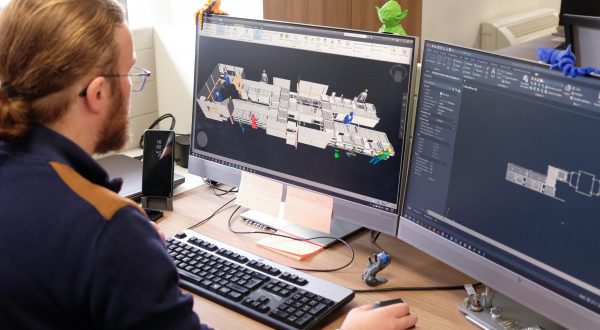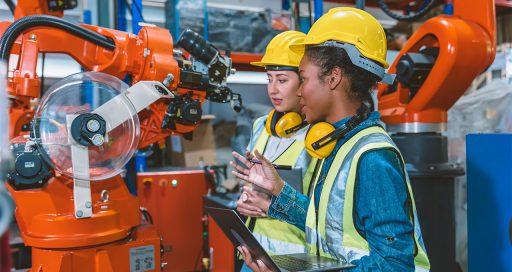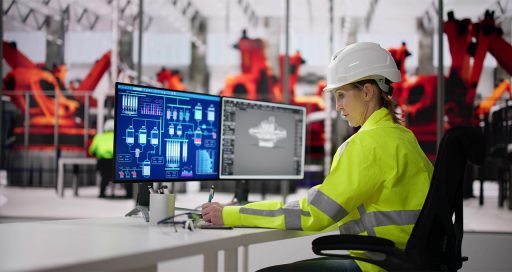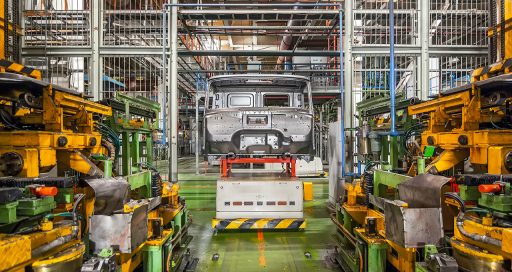By making it possible to precisely and comprehensively trial projects, even before the fabrication and installation phases, 3D modelling offers new prospects for the world of industry. We investigate with Actemium Adour Mécanique and its customer Novéal.
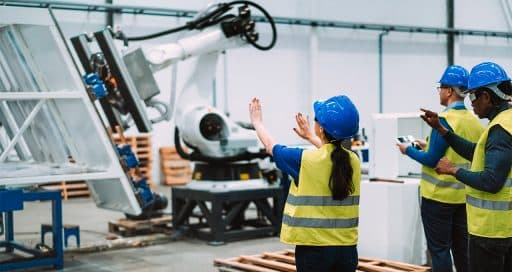
Technological advances are now fulfilling the promise of virtual, augmented and mixed reality in industry.
Long observed, often advocated and occasionally tested, innovations in virtual, augmented and mixed reality have so far been slow to make it past the factory doors. The reasons are well known: uncertain usability, complex operation, long loading times, not to mention the nausea that users often feel.
But technological advances are finally overcoming these obstacles, and observers are saying that augmented reality will undoubtedly very quickly become embedded in the spectrum of industrial standards.
Its cheerleaders have some weighty arguments. By making it possible to virtually duplicate an environment in order to test hypothetical technological and/or spatial designs cheaply and relatively comprehensively before producing and installing them, virtual reality presents significant advantages: identification of design faults, reassessment of ergonomic choices, dialogue with users around functional or structural options, addition of initially overlooked elements, etc.
“Augmented reality is only cost-effective for projects of a certain value and/or when used repeatedly.”
There is no unnecessary production, no production relaunches to rectify problems, and fewer or no production halts for line disassembly and reassembly. In short, no more, or much less, superfluous expenditure linked to project revisions. And the benefit increases further when the duplicated environment is difficult to access, hazardous or extremely costly.
Complex system
“Augmented reality requires a minimum investment of around €9,000 to €10,000 in basic equipment: a powerful computer, goggles, a dedicated application”, says Régis Départ, Methods Manager at Actemium Adour Mécanique. “Then you have the 3D modelling work and where necessary, use of a dedicated room. It is therefore only cost-effective for projects of a certain value and/or when used repeatedly”.
In 2021, this VINCI Energies business unit specialising in the mechanical maintenance of rotary machinery used augmented reality and mixed reality for the first time in response to a call for tenders from its customer Novéal (L’Oréal Group), which operates in the cosmetics sector.
The brief was to create a production line in an environment that features a complex network containing several kilometres of pipes and some 2,000 pieces of equipment. The 3D plans supplied were legible, but it was not possible to ascertain certain non-static characteristics (mounting orientation, for example). As the project was worth more than €1 million, Actemium Adour Mécanique felt it wise to 3D model the future environment and be able to enter it virtually alongside the customer.
Commercial development
As a newcomer to the field, the business unit approached Paul‑Eric Bertaud, Actemium’s 3D Innovation Project Manager for help with the process, creating the model and choosing the tools and applications needed.
“We sent him the plans in January”, says Régis Départ. “In February, we received the first version of the model. We then created a virtual reality room, procured some goggles and invested in a suitably powerful PC. Ultimately, this approach allowed us to uncover several design faults (pipework placement clashes, for example), and at the same time, spared us having to make major adjustments on site and tie up our installation team. The opportunity to immerse themselves in the environment beforehand also led our customer to make changes from the initial specification”.
The experience has proven all the more valuable since Actemium Adour Mécanique developed a whole new line of business offering its customers 3D modelling of their metalworking projects (fabrication and assembly of welded mechanical parts like gantries and conveyors) and mixed-reality presentations of customer-specific projects.
Virtual, augmented, mixed: three alternative realities
- Virtual reality creates an all-new environment from scratch, completely unconnected with the real world.
- Augmented reality overlays new information in the form of data on a real environment.
- Mixed reality combines features of the other two technologies, superimposing not just information but also virtual images on the real world.
All three technologies require a headset or goggles.
21/04/2023


